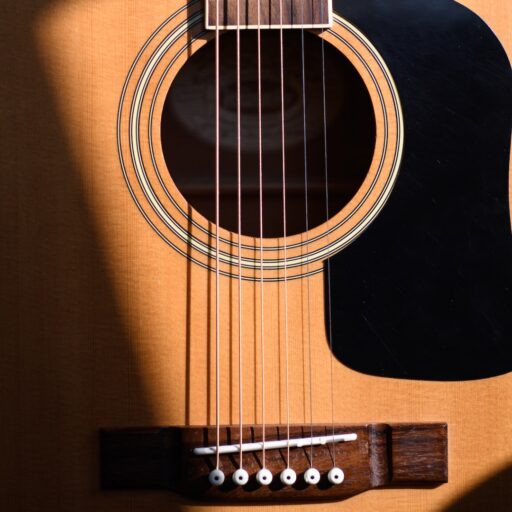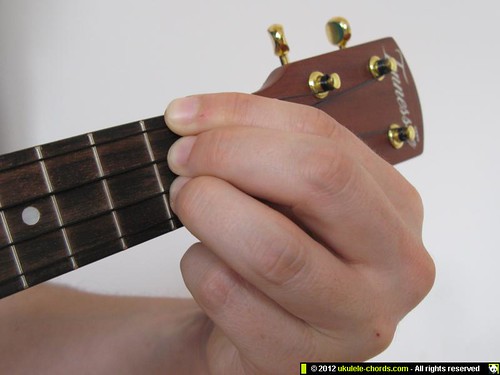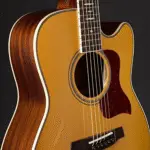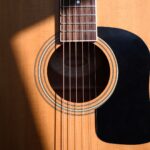Support our educational content for free when you purchase through links on our site. Learn more
Ultimate Ukulele Tuning Chart: 12 Essential Tunings You Must Try 🎵 (2025)
If you’ve ever picked up a ukulele and wondered, “Wait, how exactly do I tune this little wonder?” you’re not alone. Ukulele tuning can seem deceptively simple—until you realize there’s a whole universe of tunings beyond the classic GCEA. At Guitar Brands™, we’ve tuned hundreds of ukuleles and discovered that mastering the right tuning chart is the secret sauce to unlocking your instrument’s full potential.
Did you know the ukulele’s iconic bright sound owes a lot to its unique re-entrant tuning? Or that experimenting with alternate tunings like slack-key or low G can completely transform your playing style? Stick around, because later in this guide, we’ll reveal 12 popular ukulele tunings, explain how to tune each ukulele size perfectly, and share pro tips to keep your uke sounding pitch-perfect no matter where you play.
Key Takeaways
- Standard GCEA tuning remains the foundation, but exploring alternate tunings like low G, slack-key, and baritone DGBE opens new sonic doors.
- Different ukulele sizes (soprano, concert, tenor, baritone) require tailored tuning approaches and string choices for best results.
- Using reliable tools like the Snark SN-6 clip-on tuner or apps such as GuitarTuna makes tuning faster and more accurate.
- Tuning up to pitch and regularly stretching strings are essential habits for stable tuning.
- Troubleshooting common issues like slipping tuners or string breakage helps keep your uke performance-ready.
Ready to tune up and strum your way to ukulele mastery? Dive into our comprehensive ukulele tuning chart and expert tips to become the tuning wizard you were born to be!
👉 Shop recommended tuners and strings:
- Snark SN-6 Tuner: Amazon | Sweetwater
- D’Addario Nyltech Strings: Amazon | D’Addario Official
Table of Contents
- ⚡️ Quick Tips and Facts About Ukulele Tuning
- 🎶 The Evolution and History of Ukulele Tuning
- 🔧 Mastering Ukulele Tuning: Step-by-Step Guide for Beginners
- 🎵 12 Popular Ukulele Tuning Styles You Need to Know
- 🎸 How to Tune Different Ukulele Sizes Like a Pro
- 🎤 Ukulele Tuning Tools and Apps: What Works Best?
- ⚠️ Troubleshooting Common Ukulele Tuning Problems
- 🎯 Pro Tips for Maintaining Perfect Ukulele Tuning
- 🎼 Understanding Ukulele String Notes and Their Frequencies
- 🎵 How Alternate Tunings Can Unlock New Ukulele Sounds
- 🎸 Comparing Ukulele Tuning to Other String Instruments
- 🛠️ DIY Ukulele Tuning Hacks and Quick Fixes
- 📚 Recommended Resources and Tools for Ukulele Tuning
- 🔚 Conclusion: Your Ultimate Ukulele Tuning Cheat Sheet
- 🔗 Recommended Links for Ukulele Enthusiasts
- ❓ Frequently Asked Questions About Ukulele Tuning
- 📖 Reference Links and Further Reading
⚡️ Quick Tips and Facts About Ukulele Tuning
Welcome to the wonderful world of ukulele tuning! If you’ve ever wondered how to get that sweet, island sound just right, you’re in the perfect spot. At Guitar Brands™, we’ve tuned countless ukuleles—soprano, concert, tenor, baritone—you name it. Here are some quick, must-know facts to get you started:
- Standard Ukulele Tuning is G4-C4-E4-A4, also known as “My Dog Has Fleas” to help you remember the string notes.
- The G string is often re-entrant, meaning it’s tuned higher than the C string, giving the ukulele its signature bright sound.
- Always tune up to the note, not down, to avoid string slippage and maintain tuning stability.
- New strings stretch a lot—expect to tune multiple times when you first restring your uke.
- Baritone ukuleles are tuned differently (D3-G3-B3-E4), like the top four strings of a guitar.
- Using a chromatic tuner or a trusted app can make tuning a breeze, especially for beginners.
- Experimenting with alternate tunings can unlock new sounds and playing styles.
Want to dive deeper? Check out our full ukulele tuning guide for expert tips and tricks.
🎶 The Evolution and History of Ukulele Tuning
The ukulele’s tuning story is as rich and colorful as Hawaiian sunsets. Originally introduced to Hawaii by Portuguese immigrants in the late 19th century, the ukulele quickly became a cultural icon. But how did its tuning settle into the now-famous GCEA?
Origins of Standard Tuning
- The GCEA tuning mirrors the tuning of the Portuguese machete, a small guitar-like instrument.
- Early ukuleles were tuned in D tuning (A-D-F#-B), a whole step higher than modern standard tuning, favored before the 1930s.
- The re-entrant tuning (high G string) emerged to give the instrument its bright, jangly tone, perfect for Hawaiian music’s rhythmic strumming.
Tuning Variations Through Time
- As the ukulele spread globally, players experimented with low-G tuning (where the G string is tuned an octave lower), popularized by legends like Israel Kamakawiwo’ole.
- In the 20th century, the baritone ukulele adopted guitar-like tuning (DGBE), appealing to guitarists seeking a familiar fretboard.
- Alternate tunings such as slack-key (G-C-E-G) and slide tuning (G-C-E-Bb) reflect Hawaiian and blues influences, respectively.
For a fascinating dive into the ukulele’s tuning roots, see Smithsonian Folkways.
🔧 Mastering Ukulele Tuning: Step-by-Step Guide for Beginners
Ready to tune your ukulele like a pro? Here’s a detailed, stepwise approach that we at Guitar Brands™ swear by:
Step 1: Know Your Strings
- From top to bottom (closest to the ceiling when holding the uke), the strings are:
- 4th string: G (usually high G)
- 3rd string: C (the lowest pitch string)
- 2nd string: E
- 1st string: A (highest pitch)
Step 2: Choose Your Tuning Method
- Electronic Chromatic Tuners: Clip-on tuners like the Snark SN-6 are reliable and easy.
- Tuning Apps: Apps like Cleartune or GuitarTuna use your phone’s mic to detect pitch.
- Pitch Pipes or Piano: Match each string to a reference note.
- Online Tuners: Websites like Uke-Tuner.com offer free, browser-based tuning tools.
Step 3: Tune Each String
- Start with the C string (3rd string) to anchor your tuning.
- Tune the E string (2nd) next, then the G string (4th), and finally the A string (1st).
- Always tune up to pitch: if the string is sharp, loosen it below the note and then tighten up.
Step 4: Fine-Tune and Stretch
- After initial tuning, stretch each string gently by pulling it away from the fretboard to remove slack.
- Re-tune strings as needed—new strings especially need this.
- Play a few chords to check tuning stability.
Step 5: Practice Makes Perfect
- Tune regularly, especially before playing or recording.
- Develop your ear by listening to the intervals between strings.
For a visual and interactive guide, check out the first YouTube video embedded above!
🎵 12 Popular Ukulele Tuning Styles You Need to Know
Ukulele tuning isn’t one-size-fits-all. We’ve rounded up 12 popular tunings that can transform your playing and tone:
| # | Tuning Name | Notes (4th to 1st string) | Description & Use Case |
|---|---|---|---|
| 1 | Standard (High G) | G4 – C4 – E4 – A4 | Bright, classic Hawaiian sound. |
| 2 | Low G | G3 – C4 – E4 – A4 | Adds bass depth; popular with concert/tenor. |
| 3 | Baritone Standard | D3 – G3 – B3 – E4 | Guitar-like tuning; deeper tone. |
| 4 | D Tuning (High) | A4 – D4 – F#4 – B4 | Pre-1930s standard; brighter, higher pitch. |
| 5 | Slack-Key | G4 – C4 – E4 – G4 | Hawaiian slack-key style; mellow open chord. |
| 6 | Slide Tuning | G4 – C4 – E4 – Bb4 | Bluesy, slide-friendly tuning. |
| 7 | Half-Step Down | F#4 – B3 – D#4 – G#4 | Warmer tone, lighter string tension. |
| 8 | Low D Tuning | D3 – G3 – B3 – E4 | Baritone tuning on smaller ukes with special strings. |
| 9 | Open C6 | C4 – E4 – G4 – A4 | Open chord tuning for easy chord shapes. |
| 10 | Open G | G3 – B3 – D4 – G4 | Rich, resonant open G chord. |
| 11 | High A Tuning | G4 – C4 – E4 – A5 | Higher pitch A string for bright leads. |
| 12 | Double Low G | G3 – C4 – E4 – A4 | Both G and C strings tuned low for deep tone. |
Why Experiment?
Different tunings can:
- Change the mood and tone of your playing.
- Offer new chord voicings and fingerings.
- Help you play along with other instruments or songs in different keys.
Want to explore these tunings in detail? Our Guitar Brand Guides cover string sets and tuning setups for various ukuleles.
🎸 How to Tune Different Ukulele Sizes Like a Pro
Ukuleles come in four main sizes, each with its own tuning quirks. Here’s how to nail tuning on each:
Soprano Ukulele Tuning Essentials
- Standard tuning: G4-C4-E4-A4 (high G)
- Smallest and most traditional size.
- Strings are shorter and lighter gauge, so tune gently to avoid breakage.
- Ideal for beginners and classic Hawaiian sound.
Concert Ukulele Tuning Tips
- Same standard tuning as soprano: G4-C4-E4-A4.
- Slightly larger body and longer scale length (~15 inches).
- Strings have more tension; tuning is more stable.
- Great for players wanting a fuller sound without losing brightness.
Tenor Ukulele Tuning Techniques
- Standard tuning G4-C4-E4-A4 or Low G tuning G3-C4-E4-A4.
- Longer scale (~17 inches), allowing for richer tone and more fret space.
- Low G tuning adds bass depth and is favored by pros like Jake Shimabukuro.
- Use heavier gauge strings for low G tuning to maintain tension.
Baritone Ukulele Tuning Explained
- Standard tuning: D3-G3-B3-E4 (like the top four strings of a guitar).
- Largest ukulele size with a deeper, mellower tone.
- Requires thicker strings designed for baritone scale length (~19 inches).
- Not interchangeable with soprano/tenor strings due to tension differences.
Ukulele Size vs. Tuning Summary Table
| Ukulele Size | Standard Tuning | Scale Length | String Gauge Notes | Typical Use Case |
|---|---|---|---|---|
| Soprano | G4-C4-E4-A4 | ~13 inches | Light gauge | Traditional, beginner |
| Concert | G4-C4-E4-A4 | ~15 inches | Medium gauge | Intermediate players |
| Tenor | G4-C4-E4-A4 or Low G | ~17 inches | Medium/heavy gauge | Pros, soloists |
| Baritone | D3-G3-B3-E4 | ~19 inches | Heavy gauge | Guitarists switching |
🎤 Ukulele Tuning Tools and Apps: What Works Best?
Tuning your ukulele accurately is easier than ever thanks to technology. Here’s our expert take on the best tools:
Clip-On Tuners
| Model | Design | Accuracy | Battery Life | Price Range | Our Rating (1-10) |
|---|---|---|---|---|---|
| Snark SN-6 | Compact, bright display | ±1 cent | 20+ hrs | Affordable | 9 |
| Korg Pitchclip 2 | Slim, easy to read | ±0.5 cent | 30+ hrs | Mid-range | 8 |
| D’Addario NS Micro | Small, discreet | ±1 cent | 15+ hrs | Affordable | 8 |
Why we love clip-ons: They’re fast, reliable, and work well in noisy environments. Just clip it to your headstock and pluck a string.
Tuning Apps
- GuitarTuna: User-friendly, supports ukulele tuning, and includes games to train your ear.
- Cleartune: Highly accurate chromatic tuner with customizable temperaments.
- UkeTuner: Simple, dedicated ukulele tuner app with visual feedback.
Online Tuners
- Uke-Tuner.com offers a free, browser-based tuner that plays reference notes and listens to your strings.
- Get-Tuned.com provides interactive lessons and tips.
Traditional Tools
- Pitch pipes and pianos can be used if you prefer acoustic tuning methods.
- These require a trained ear but are great for developing pitch recognition.
⚠️ Troubleshooting Common Ukulele Tuning Problems
Even seasoned players hit tuning snags. Here’s how to troubleshoot the usual suspects:
Slipping Tuners
- Cause: Loose tuning peg screws or worn gears.
- Fix: Tighten screws gently; if slipping persists, consider upgrading to quality tuners like Grover or Gotoh.
- Pro Tip: Lubricate gears with a tiny drop of machine oil for smoother tuning.
String Stretching and Breaking
- New strings stretch a lot—expect to tune frequently at first.
- Avoid tuning strings down to pitch; always tune up to avoid slack.
- Use quality strings like D’Addario Nyltech or Aquila Nylgut for durability.
Intonation Issues
- If chords sound off despite tuning, check string height and nut slots.
- Poor fret placement or worn frets can cause tuning inaccuracies.
- Consult a luthier for setup adjustments.
Environmental Factors
- Humidity and temperature changes affect tuning stability.
- Store your ukulele in a case and avoid extreme conditions.
🎯 Pro Tips for Maintaining Perfect Ukulele Tuning
Want your uke to stay in tune longer? Here are our top pro tips:
- Stretch your strings gently after tuning to remove slack.
- Tune up to pitch every time.
- Keep tuning pegs tight but not over-tightened.
- Use quality strings suited for your ukulele size and tuning.
- Regularly check your nut and saddle for wear or binding.
- Store your ukulele properly in a humidified case if you live in dry climates.
- Change strings regularly—old strings lose tension and tone.
- Practice tuning by ear to develop pitch recognition and catch subtle tuning shifts.
🎼 Understanding Ukulele String Notes and Their Frequencies
Knowing the exact frequencies of your strings helps in precise tuning and troubleshooting.
| String | Note | Frequency (Hz) | Octave | Description |
|---|---|---|---|---|
| G | G4 | 392.00 | High | Re-entrant high G string |
| C | C4 | 261.63 | Middle | Lowest pitch string |
| E | E4 | 329.63 | Middle | Middle pitch string |
| A | A4 | 440.00 | High | Highest pitch string |
Baritone tuning frequencies:
| String | Note | Frequency (Hz) | Octave |
|---|---|---|---|
| D | D3 | 146.83 | Low |
| G | G3 | 196.00 | Low-Mid |
| B | B3 | 246.94 | Mid |
| E | E4 | 329.63 | Middle |
Understanding these helps when using chromatic tuners or tuning by ear.
🎵 How Alternate Tunings Can Unlock New Ukulele Sounds
Alternate tunings are like secret doors to new musical worlds. Here’s why you should experiment:
Benefits of Alternate Tunings
- New tonal colors: For example, slack-key tuning (G-C-E-G) produces a lush, open sound perfect for Hawaiian slack-key style.
- Easier chord shapes: Some tunings simplify tricky chords or enable drone notes.
- Creative inspiration: Changing tuning can spark fresh songwriting ideas.
- Matching other instruments: Alternate tunings help you jam with guitarists or pianists in different keys.
Popular Alternate Tunings
- Low G tuning (G3-C4-E4-A4): Adds bass depth.
- Half-step down tuning (F#-B-D#-G#): Warmer tone, lighter string tension.
- Slide tuning (G-C-E-Bb): Bluesy vibe, great for slide playing.
- Slack-key tuning (G-C-E-G): Classic Hawaiian open tuning.
Caution
- Chord shapes and fingerings change, so be prepared to relearn some patterns.
- Playing with others may require mental transposition.
Try This!
Why not try tuning your uke a half-step down right now? It’s easy to do and can surprise you with a richer sound. For more on this, see the detailed half-step down tuning guide.
🎸 Comparing Ukulele Tuning to Other String Instruments
Curious how ukulele tuning stacks up against guitars, mandolins, or banjos? Here’s a quick comparison:
| Instrument | Standard Tuning Notes | Number of Strings | Tuning Style | Notes on Ukulele Comparison |
|---|---|---|---|---|
| Ukulele | G4-C4-E4-A4 (high G) | 4 | Re-entrant | Unique bright sound due to re-entrant G |
| Guitar | E2-A2-D3-G3-B3-E4 | 6 | Linear (low to high) | Baritone ukulele tuning matches top 4 strings |
| Mandolin | G3-D4-A4-E5 | 8 (4 pairs) | Linear | Higher pitch, double strings for shimmer |
| Banjo | G4-D3-G3-B3-E4 (5-string) | 5 | Re-entrant | Similar re-entrant concept on 5th string |
Ukulele’s re-entrant tuning is fairly unique, giving it that signature “plucky” sound that’s instantly recognizable.
🛠️ DIY Ukulele Tuning Hacks and Quick Fixes
Sometimes you’re on the road or away from your tuner—no worries! Here are some quick hacks:
- Use a piano or keyboard app: Play the reference notes and match your strings.
- Tune to a smartphone app: Even if offline, many apps store last tuning.
- Harmonics tuning: Lightly touch the string at the 5th and 7th frets to compare pitches between strings.
- Use a tuning fork: Strike it and match the A4 string to the pitch.
- Tape a paper clip to the tuning peg to prevent slipping (temporary fix).
- Mark your tuning pegs with a small dot or tape to remember your ideal tuning positions.
📚 Recommended Resources and Tools for Ukulele Tuning
To keep your ukulele sounding its best, here are some trusted resources and tools:
-
Tuners:
- Snark SN-6 Clip-On Tuner
- Korg Pitchclip 2
- D’Addario NS Micro Tuner
-
Strings:
- D’Addario Nyltech
- Aquila Nylgut
- Worth CH (great for alternate tunings)
-
Apps:
- GuitarTuna (iOS/Android)
- Cleartune
- UkeTuner
-
Websites:
-
Books:
- Ukulele Aerobics by Chad Johnson
- The Daily Ukulele by Liz and Jim Beloff
CHECK PRICE on popular tuners and strings:
- Snark SN-6: Amazon | Sweetwater | Snark Official Website
- D’Addario Nyltech Strings: Amazon | Sweetwater | D’Addario Official
Pro tip: Don’t forget to check out the first YouTube video embedded above for a quick, hands-on demonstration of standard ukulele tuning!
With these insights from Guitar Brands™, you’re now equipped to tune your ukulele confidently, explore new tunings, and keep your instrument sounding fantastic. Ready to tune up and strum away? 🎶
🔚 Conclusion: Your Ultimate Ukulele Tuning Cheat Sheet
Well, there you have it—a deep dive into the vibrant world of ukulele tuning, brought to you by the ukulele aficionados at Guitar Brands™. From mastering the classic GCEA standard tuning to exploring adventurous alternate tunings like half-step down or slack-key, you’re now armed with the knowledge to make your ukulele sing exactly how you want.
Remember our early teaser about tuning stability? The secret lies in tuning up to pitch, stretching your strings, and choosing the right strings and tuners for your ukulele size. Whether you’re wielding a tiny soprano or a deep-voiced baritone, the right approach transforms tuning from a chore into a joyful ritual.
If you’ve been wondering whether to invest in a clip-on tuner or rely on apps, our expert consensus is clear: clip-on tuners like the Snark SN-6 offer unbeatable accuracy and convenience, especially in noisy environments, while apps provide excellent portability and learning tools. Pair these with quality strings like D’Addario Nyltech or Aquila Nylgut, and you’re set for hours of perfectly pitched strumming.
So, go ahead—experiment with those alternate tunings, challenge yourself with new chord shapes, and keep your uke sounding fresh and vibrant. Your musical journey just got a whole lot more tuneful! 🎶
🔗 Recommended Links for Ukulele Enthusiasts
-
Snark SN-6 Clip-On Tuner:
Amazon | Sweetwater | Snark Official Website -
D’Addario Nyltech Ukulele Strings:
Amazon | D’Addario Official -
Aquila Nylgut Strings:
Amazon | Aquila Official -
GuitarTuna Tuning App:
App Store | Google Play -
Recommended Ukulele Books:
❓ Frequently Asked Questions About Ukulele Tuning
What are the standard ukulele tuning notes?
The standard ukulele tuning for soprano, concert, and tenor sizes is G4-C4-E4-A4. This tuning is re-entrant, meaning the G string is tuned higher than the C string, giving the ukulele its signature bright and cheerful sound. Baritone ukuleles differ, typically tuned D3-G3-B3-E4, which matches the top four strings of a guitar.
How do I tune a ukulele using a tuning chart?
A tuning chart shows the target notes for each string, often with corresponding frequencies or note names. To use it:
- Identify each string’s note on the chart (e.g., 4th string = G4).
- Use a tuner or reference pitch (piano, app) to match the string’s pitch to the chart.
- Adjust the tuning peg until the tuner indicates the correct note.
- Tune strings in a recommended order (usually C, E, G, then A) for better pitch recognition.
- Repeat tuning passes, stretching strings gently to stabilize tuning.
What are the different types of ukulele tunings?
Ukulele tunings vary widely, but some common types include:
- Standard GCEA (High G): Bright, traditional sound.
- Low G Tuning: Adds bass depth by tuning the G string an octave lower.
- Baritone DGBE: Guitar-like tuning for baritone ukes.
- Slack-Key (G-C-E-G): Open tuning used in Hawaiian slack-key style.
- Slide Tuning (G-C-E-Bb): Bluesy tuning for slide playing.
- Half-Step Down (F#-B-D#-G#): Warmer tone with lighter string tension.
Experimenting with these tunings can inspire creativity and new musical textures.
Can I use a guitar tuner for tuning a ukulele?
Yes, you can use a guitar tuner for a ukulele, especially if it’s a chromatic tuner that detects all notes. However, some guitar tuners may not be sensitive enough for the ukulele’s higher pitches or re-entrant tuning. Clip-on tuners designed for ukuleles or chromatic tuners like the Snark SN-6 are generally more accurate and user-friendly for ukulele players.
How often should I tune my ukulele?
You should tune your ukulele every time you play, especially if it’s new or freshly restrung. Strings stretch and environmental factors like humidity and temperature can cause tuning drift. For beginners, tuning multiple times during practice sessions is normal.
Why does my ukulele go out of tune quickly?
Common reasons include:
- New strings stretching out.
- Loose or slipping tuning pegs.
- Environmental changes (humidity, temperature).
- Poor string quality or incorrect string gauge.
- Nut or saddle binding causing tuning instability.
Regular maintenance and quality strings help maintain tuning stability.
📖 Reference Links and Further Reading
- Get-Tuned.com: How to Tune the Ukulele
- LiveUkulele.com: Half-Step Down Tuning
- LearnPlayUke.com: Different Types of Uke Tunings
- Uke-Tuner.com
- Ukulele-Chords.com
- Smithsonian Folkways: Ukulele History
- D’Addario Official Website
- Snark Tuners Official Website
- Aquila Strings Official Website
For more expert insights and gear recommendations, explore our Guitar Brand Guides and Guitar Buying Guide. Happy tuning! 🎵









